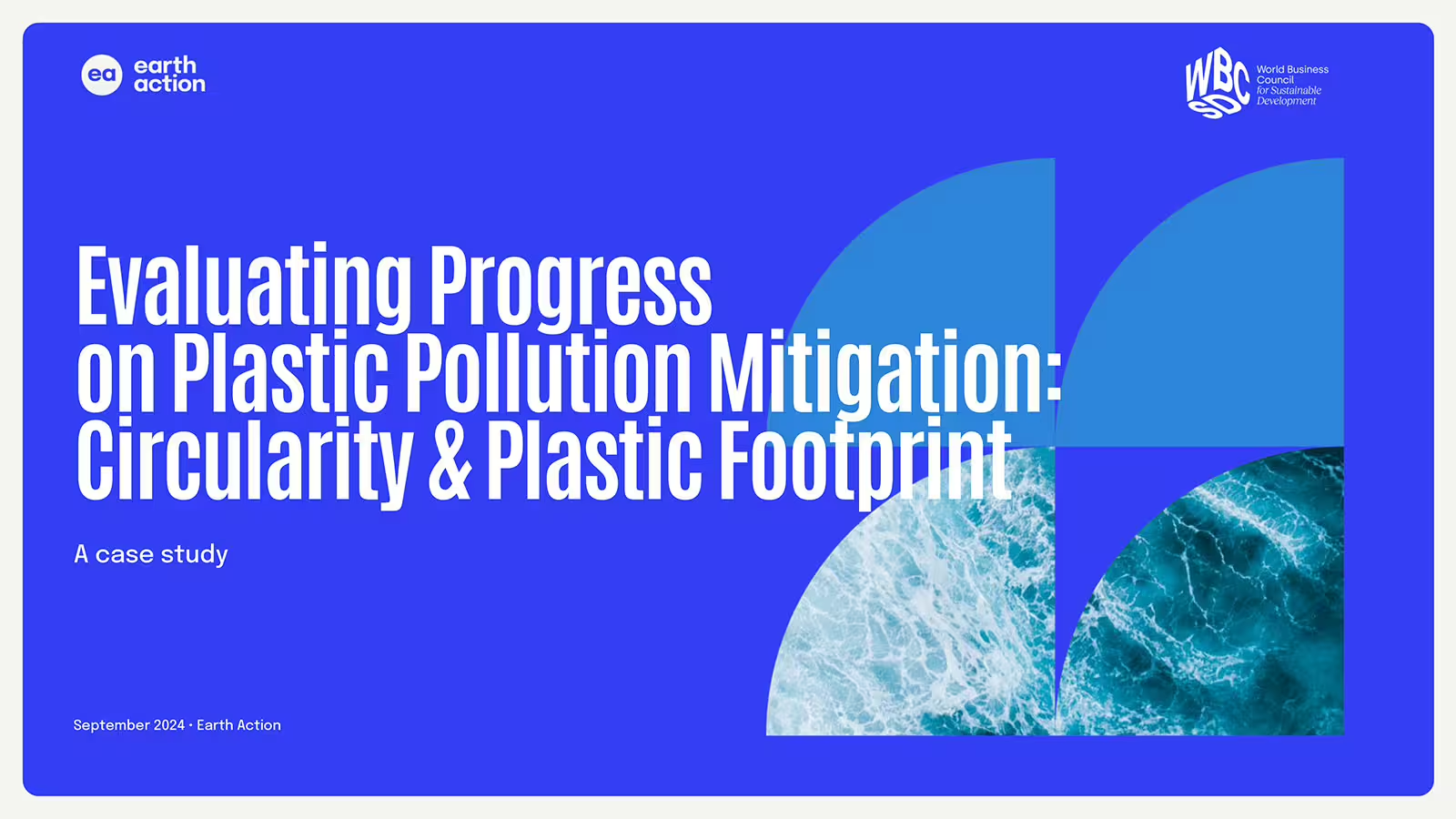Evaluating Progress on Plastic Pollution Mitigation: Circularity & Plastic Footprint
Published: September 12, 2024

The plastic pollution crisis is one of the most pressing environmental challenges of our time.
The case study “Evaluating Progress on Plastic Pollution Mitigation: Circularity & Plastic Footprint,” developed by Earth Action with the support of WBCSD, looks at the circularity strategy and performance measurement of a large sports equipment producer.
Through different scenarios describing multiple circularity actions*, the case study compares the impact of these initiatives on the company circularity performance and the impact on plastic pollution reduction. To measure circularity performance and plastic pollution, the case study uses the WBCSD Circular Transition Indicators (CTI) and the plastic pollution metric as developed by the Plastic Footprint Network.
This case study shows that to reduce meaningfully plastic pollution and transition to a circular economy, companies need to implement complementary actions to:
- Narrow the Loop: reducing the total amount of materials used, especially problematic and unnecessary plastics, through scientific, life-cycle assessment-based approaches.
- Slow the Loop: extending the lifespan of products through reuse, repair, and refurbishing. This reduces the need for new materials and the volume of waste generated, moving away from single-use plastics.
- Close the Loop: designing products for recovery, enhancing recycling and recovery to keep materials in use.
To measure efficiently their progress, companies can use the CTI to assess their effectiveness in closing the loop between material inflows and outflows (close the loop module); companies should also use a resource intensity metric to reflect the reduction in the materials they use (narrow to the loop); and a metric that reflects the increased product longevity and the transition to reuse/refill models (slow the loop).
Finally, companies should link these circularity indicators with impact by using the plastic pollution impact metric (highlighting mismanaged plastic waste) to evaluate the effectiveness of their circularity strategies in reducing plastic pollution.
This case study aims to be a roadmap for achieving a circular economy and ending plastic pollution.
* increase of recycled content in products; improvement of product eco-design; introduction of a repair services, and take-back scheme; reduction of plastic content; single-use plastic elimination and production of more durable products.